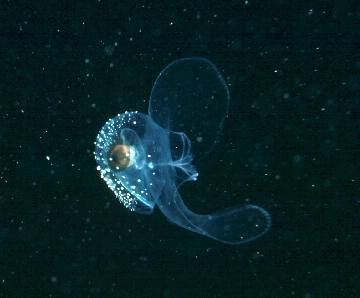Rank Superfamily | ||
 | ||
People also search for | ||
The superfamily Cavolinioidea is the most speciose group of sea butterflies. Sea butterflies (thecosomata) are pelagic marine gastropods, so called because they swim by flapping their wing-like parapodia.
Contents
Distribution
These sea butterflies are circumglobal, carried by the sea currents to all the seas of the world.
Habitat
Cavoliniids prefer deep waters, from 100 m up to 2,000 m. They do best in warm oceanic water.
Shell description
Species in this superfamily have a calcareous, bilaterally symmetrical conical or globular shell. Identification of juveniles is difficult as the juvenile shells differ greatly from adults.
Life habits
Towards the anterior end of the animal, two parapodia (winglike flat lobules) protrude between each half of the shell. The parapodia enable these sea butterflies to float along in the water currents, using slow flapping movements. The parapodia are also covered with cilia, which produce a minute water current that pushes the planktonic food to the mouth of the animal.
Reproduction
Cavoliniids have a strange sexual life. They develop from males as juveniles into hermaphrodites and then later convert into females. More than one male stage can occur. This bizarre-seeming, but not very uncommon phenomenon is called protandry. (This is also common among many species of fish, some may all start as females, others species may start as males.)
Taxonomy
In 2003, the family Cavoliniidae was raised to the rank of superfamily Cavolinioidea. At the same time, the subfamilies were given the new status of families: Cavoliniidae, Cliidae, Creseidae and Cuvierinidae (Cainozoic Research, 2(1-2): 163-170, 2003).
2005 taxonomy
In the taxonomy of Bouchet & Rocroi (2005) several families have been categorized as subfamilies of the family Cavoliniidae and the superfamily Cavolinioidea is treated like this:
In 2005 a new family Praecuvierinidae Janssen, 2005 was created on evolutionary grounds.
